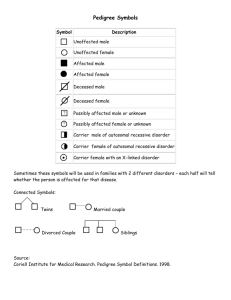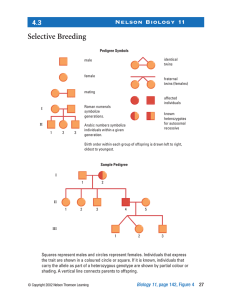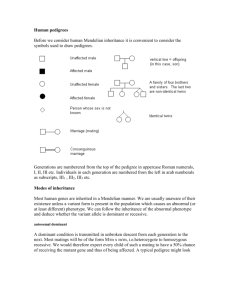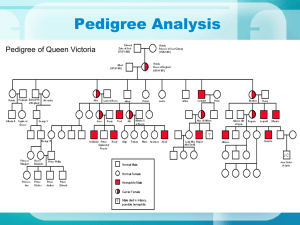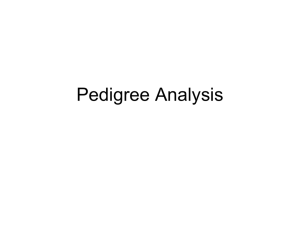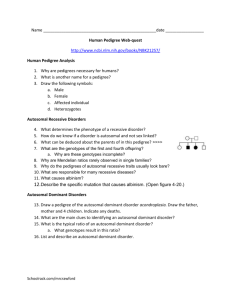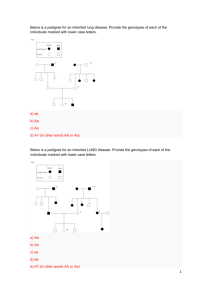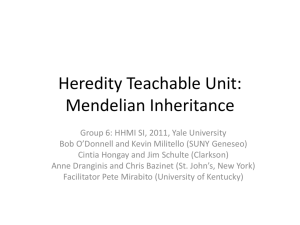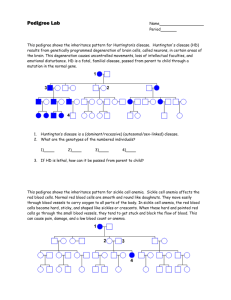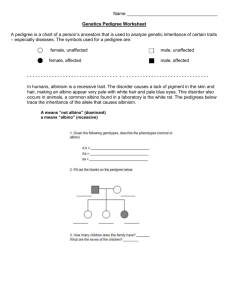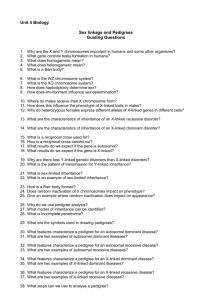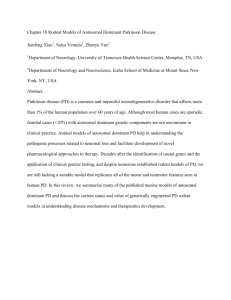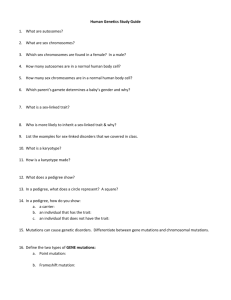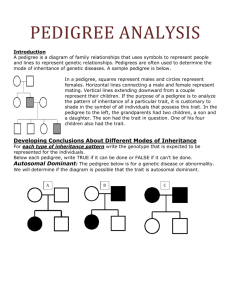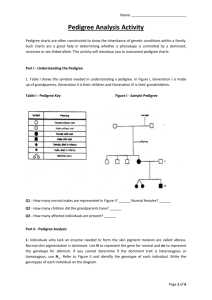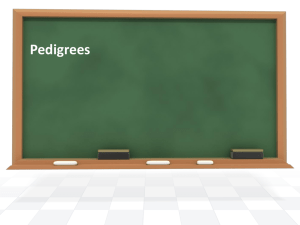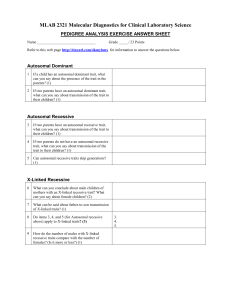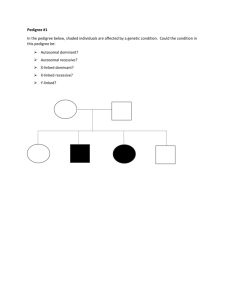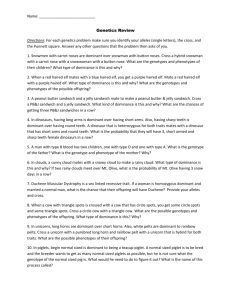5.3: Following Patterns of Inheritance in Humans Read section 5.3
advertisement
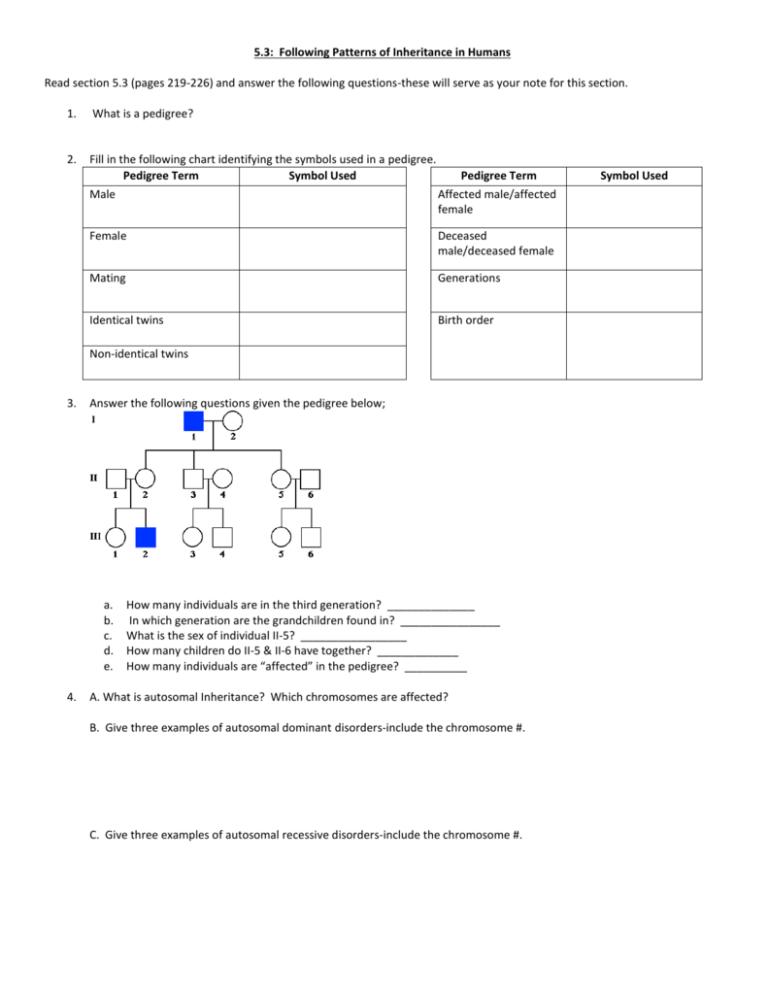
5.3: Following Patterns of Inheritance in Humans Read section 5.3 (pages 219-226) and answer the following questions-these will serve as your note for this section. 1. What is a pedigree? 2. Fill in the following chart identifying the symbols used in a pedigree. Pedigree Term Symbol Used Pedigree Term Male Affected male/affected female Female Deceased male/deceased female Mating Generations Identical twins Birth order Non-identical twins 3. Answer the following questions given the pedigree below; a. b. c. d. e. 4. How many individuals are in the third generation? ______________ In which generation are the grandchildren found in? ________________ What is the sex of individual II-5? _________________ How many children do II-5 & II-6 have together? _____________ How many individuals are “affected” in the pedigree? __________ A. What is autosomal Inheritance? Which chromosomes are affected? B. Give three examples of autosomal dominant disorders-include the chromosome #. C. Give three examples of autosomal recessive disorders-include the chromosome #. Symbol Used Autosomal Dominant Inheritance: Read through this description, including Huntington disease. Follow through the pedigree (Fig. 5.12 & 5.13) and be able to identify this as an autosomal dominant trait. Make your own summary of this in the space below. Be able to answer the Green sentence at the very bottom of page 221. Autosomal Recessive Inheritance: Read through this description, including Cystic Fibrosis disease. Follow the pedigree (Fig. 5.14 & 5.15) and be able to identify this as an autosomal recessive trait. Make your own summary of this in the space below. Be able to answer the “Learning check” questions at the bottom of p223#17-22 Read through pages 224-226 There are many forms of testing that can be used to identify the presence of a genetic condition. Differentiate between the types of testing according to how they can be used. Describe three roles a genetic counsellor may play in helping a family cope with the possibility of a genetic disease. p227 Q. # 2-5, 7, 8

